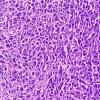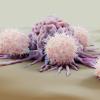A fungus commonly found in human hair follicles also resides in the gut and might play a role in Crohn’s disease, it is reported.

Malassezia yeasts may worsen intestinal disorders, such as inflammatory bowel disease, in patients who have a certain genetic makeup, researchers claim.
It is not known how the microscopic fungi– which are linked to skin conditions, including dandruff – end up in the gut, or what they do there.
Co-author of the research David Underhill said: “We were surprised to find that Malassezia restrica was more common on intestinal tissue surfaces in Crohn’s disease patients than in healthy people.
“Further, the presence of Malassezia was linked to a common variation in a gene known to be important for immunity to fungi – a genetic signature more common in patients with Crohn’s disease than the healthy population.”
The authors stated their data does not suggest that the presence of Malassezia in the gut is an inherently bad thing.
They said it does not seem to cause disease in the gut by itself, but “if there is some intestinal inflammation, Malassezia seems to make it worse”.
IBD Malassezia yeasts may worsen intestinal disorders, such as Inflammatory Bowel Disease, in patients with a certain genetic makeup, researchers claim.
Image credit | Science Photo Library




